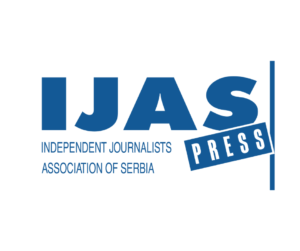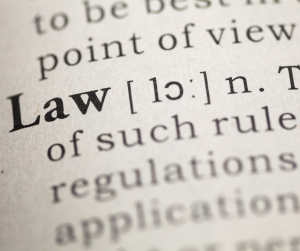Attacks happen on the street or in connection with reporting on the street, and they don’t happen because the journalist is reporting on such and such a topic, but because she is reporting at all.
Since November 1, when a canopy fell in Novi Sad and killed 16 people, nothing has been the same for any profession in Serbia. A lot has changed for journalists, especially in terms of security. The current situation “on the table”, that is, in the Database of the Independent Association of Journalists of Serbia, is as follows: since the beginning of 2025, there have been 135 attacks on journalists. Pressures dominate, 79 of them; verbal threats – 34, and we also have 19 physical attacks.
And now, while these lines are being formed, the most recent case is the threatening letter received by the editorial office of N1. One sentence in that letter is indicative when it comes specifically to female journalists: in that delusive mixture of threats, reminders of the mass murder in the editorial office of the satirical magazine “Charlie Hebdo”, etc., there is a bizarre reference to a song that lists women’s names. The sender of the letter changes them from the original to “Danica, Žaklina, Maja, Nataša, Ivana”. It is clear even without their last names: we are talking about female journalists who are the most visible on this television.
WOMEN ON THE FRONTLINE
Journalism has long been a female profession all over the world. Some experts claim that the reason is that a lot of money came out of the media. For our local context, it is not so important. What is more important here is the fact that we live in a time of political crisis, which affects the media in several segments related to security.
First, we haven’t had a period in a long time that required journalists to do such long-term and extensive work in the field. Events moved to the street. Journalists, especially female journalists, have become even more visible and recognizable than usual. In times of political crisis, the public’s attention is more and more focused on informative content, so more and more eyes are focused on such profiled media and journalists.
And the field is often a scene. Just from the “See you on Vidovdan” protest until today, viewers of the live broadcast of protests and blockades on Television N1 and Nova S have witnessed countless verbal attacks and even sexual harassment of female journalists.
N1 journalist Sanja Sovrlić found herself in a situation no person wants to be in. While she was participating in a live program from one of the Belgrade blockades, a visibly intoxicated man approached her, started touching her on the head and making inappropriate comments. Both Sovrlić and the cameraman acted professionally: they performed the recording until the end, as if nothing was happening. This is just one, neither the most brutal nor the only example of attacks on female journalists in the age of protests. We will list some more.
In Kosjerić, “Vremena” journalist Tijana Stanić’s car was damaged and her tires were slashed while she was reporting from the elections in this town.
In Kragujevac, during the protest in front of the stand of the Serbian Progressive Party, Glas Šumadije journalist Nikoleta Jošović was hit on the hand by the SNS councilor, who did not allow her to film the event.
Tamara Radovanović, a journalist from Južni Vesti from Niš, was reporting from the protest in Niš when she was also attacked by a SNS supporter. Instead of taking him away, the police took her away.
On the plateau near the House of the National Assembly, where the so-called Ćaciland spread, a journalist from Cenzolovka was attacked. The video that she managed to make shows what is happening, but we also heard her testimony, in which she says that she asked the police for help. However, he replied that the “residents” of Ćaciland and the police treat her the same way.
Now we have a letter-threat to Television N1, where the journalists of this company are listed by name.
WHAT’S DIFFERENT NOW?
Threats to female journalists are not a new phenomenon in the media orbit. However, in the last few months, the reason, the motive and the attacker are always known and, in a way, always the same.
In previous years, female journalists have criticized criminal clans, fan groups, local powerful and businessmen, or ultra-right movements close to the ruling regime. Roughly in advance, before publishing a story or expressing an opinion, they could anticipate whether some form of attack would occur.
Now everything is more condensed, it happens on the street or in connection with reporting on the street, and the attacks do not happen because the journalist is reporting on such and such a topic, but because she is reporting at all. In the division that has been made here, where we have the government against the citizens and are thus divided into “ours” and “theirs”, it is enough for a journalist to exist and therefore be the target of attacks.
INTENSIFYING VIOLENCE
Here, as in the rest of the world, violence against female journalists most often begins in the online sphere and then spills over into the physical world. The specificity of the attacks, when it comes to women, is that they always have a misogynistic component: in addition to everything else, which also happens to male colleagues, female journalists are often insulted because of their age (too few or too many), looks, and threats of violence are often also threats of sexual violence. The transition from the virtual to the physical sphere is most often intensified in times of social turmoil such as ours.
In 2022, the International Center for Journalists (ICFJ) published a major study on the safety of female journalists, with an emphasis on the intertwining of safety in the online and offline spheres. From this research, a pattern linking online violence campaigns and physical attacks is very visible. It is clear that online abuse and physical attacks on female journalists are not only related, but in many cases are causally related. This suggests that online attacks may be an indicator of physical violence, compounded by impunity for these attacks.
“In addition to causing very real psychological harm, targeted online violence poses an increasing risk to physical safety, including mass backlash,” the research states. “Journalists who participated in this research received death threats hung on trees near their newsrooms, messages left on bulletin boards at train stations on their way to work, letters with serious threats, flat tires on their cars, and broken into apartments. They also experienced physical attacks, ostracism from the local community, and stalking.”
The trajectory of violence moving from the online sphere to the offline sphere is a vicious and self-perpetuating cycle. Online harassment and threats encourage physical attacks; and offline abuse (eg, politicians publicly targeting female journalists during appearances) can escalate online violence, which, in turn, exacerbates real-world risks. One-fifth (20 percent) of female journalists surveyed said they had experienced harassment, abuse and assault in the physical world that they believed started online.
THEY ARE ALREADY STEEL, THEY DO NOT NEED STEELING
When it comes to the protection of female journalists, the first address is the newsroom. ICFJ research, however, shows that they are often let down at the very first step.
According to the statements of the interviewees and survey participants in this research, there is still a pattern of shifting the blame to the victim when it comes to online violence against female journalists. This effectively holds victims responsible for the violent behavior of others and places the onus on them to change their behavior to protect themselves. This parallels the way women are still often treated in the context of sexual harassment, assault or domestic violence. Every tenth survey participant stated that, when she reported online violence to her employers, she received the answer that she should “harden up” or “have a thicker skin”. It reflects the failure of many media outlets to take online gender-based violence seriously as a threat to workplace safety.
One Kenyan journalist, who wished to remain anonymous, was very clear on this point: “Thick skin does not protect you from a personal attack where your personal information is shared and someone promises to rape you.”
TABOO SUBJECT – INFLUENCE ON MENTAL HEALTH
The UNESCO-ICFJ survey revealed a very low level of access to practical or psychological support within media organizations for women journalists who are the targets of attacks. Globally, only fourteen percent of female respondents said they knew their employer had a policy or guidelines regarding online bullying. The same percentage said they could get in touch with a digital security expert who could help them. Only seventeen percent knew that they had access to legal support, and only eleven percent stated that their employers provide them with access to counseling or psychological services. Twenty percent indicated that they had access to a gender-sensitive peer support network.
Fortunately, we have at least something here: the Independent Association of Journalists has a system of free psychological support for journalists. If you need any of the above types of help, you can contact NUNS at the email: [email protected] or at the 24-hour phone number: 060/6882231, and you can also contact the IAN organization directly at the email: [email protected] or by phone at 063/389729.
This text was produced with the financial support of the European Union. The weekly “Vreme” is solely responsible for the content of this text and under no circumstances can it be considered to reflect the views of the European Union.
This project – Women Journalists Are Not Alone: Information, Protection and Resilience – is supported by the “Safejournalists.net” support program.
Source: Vreme




